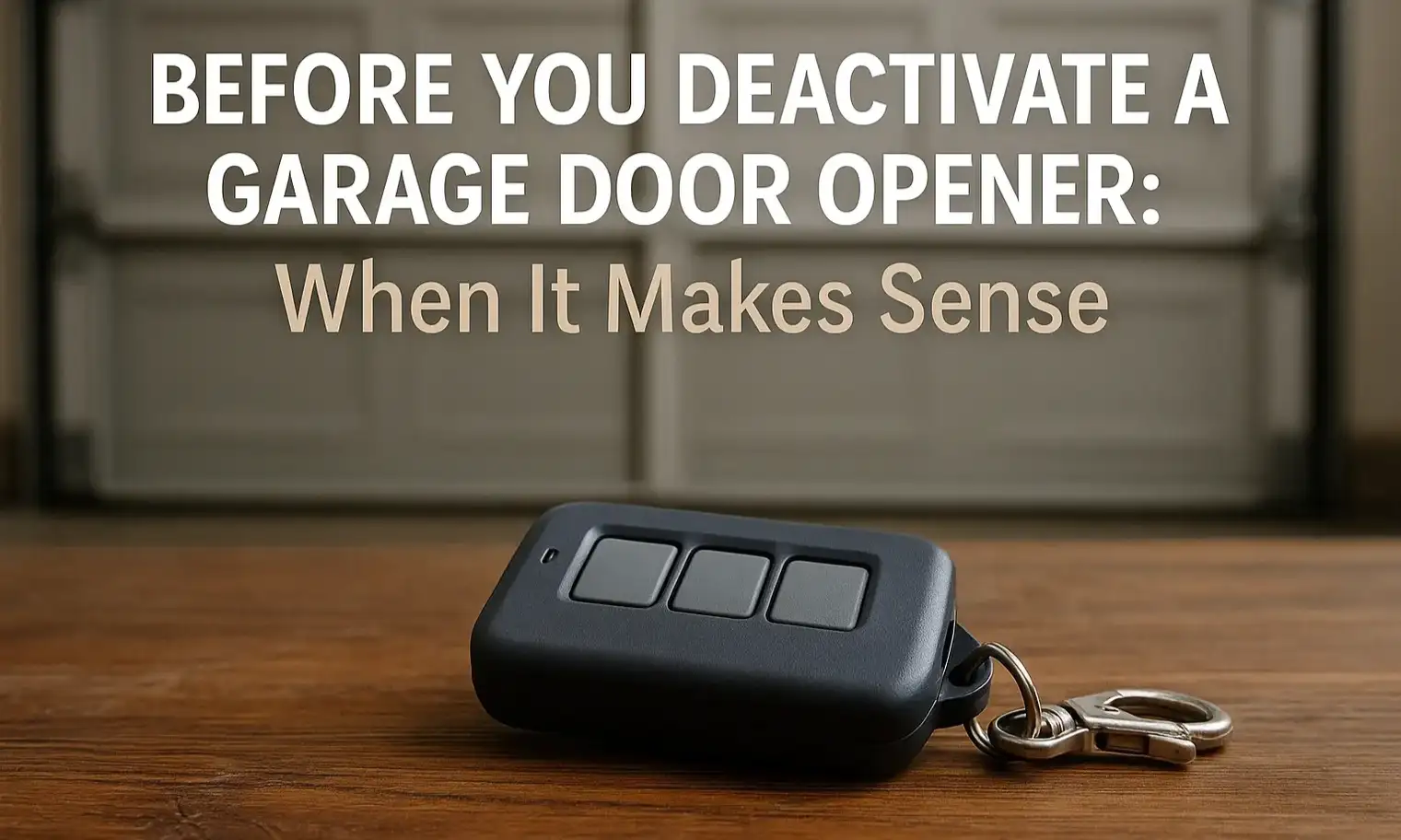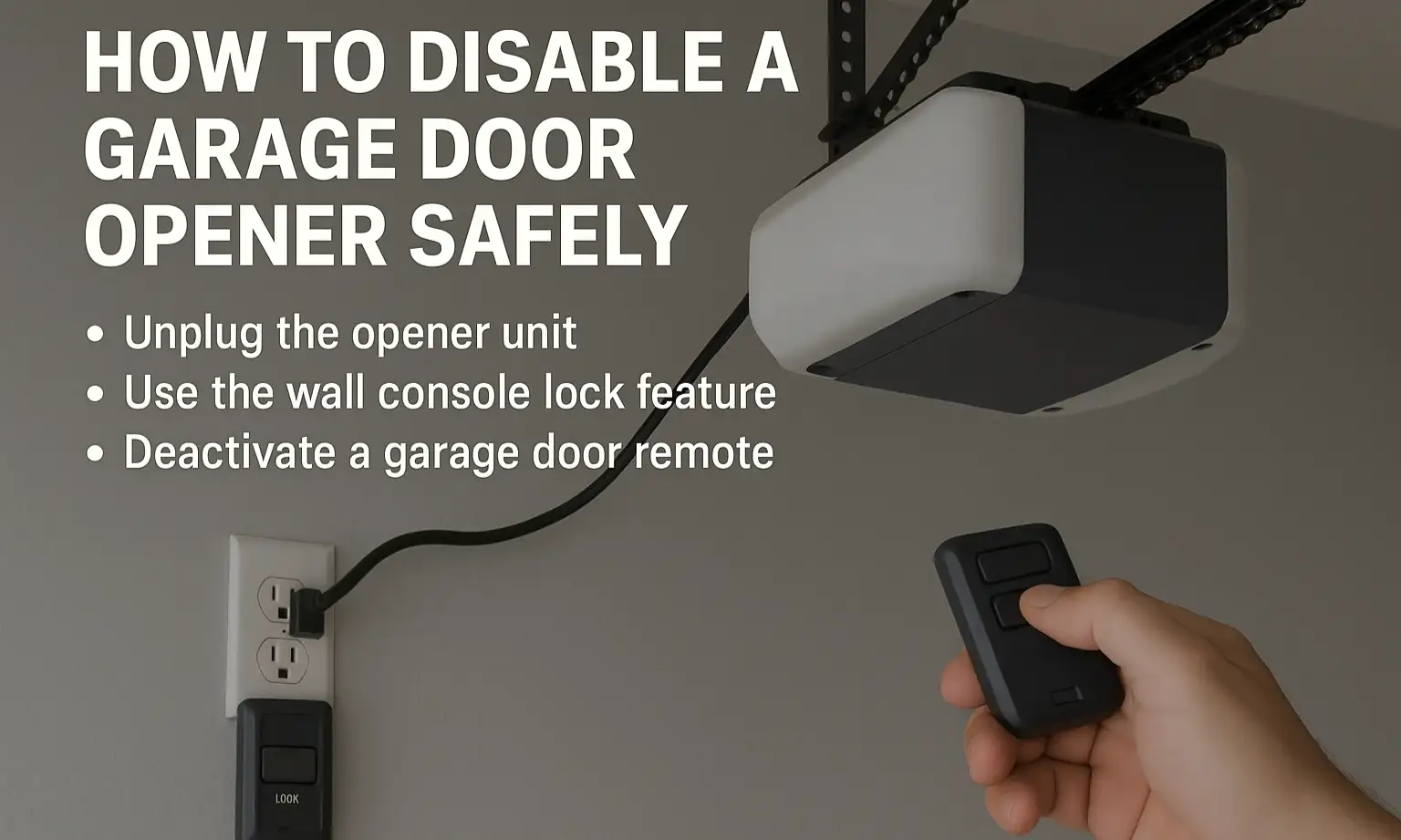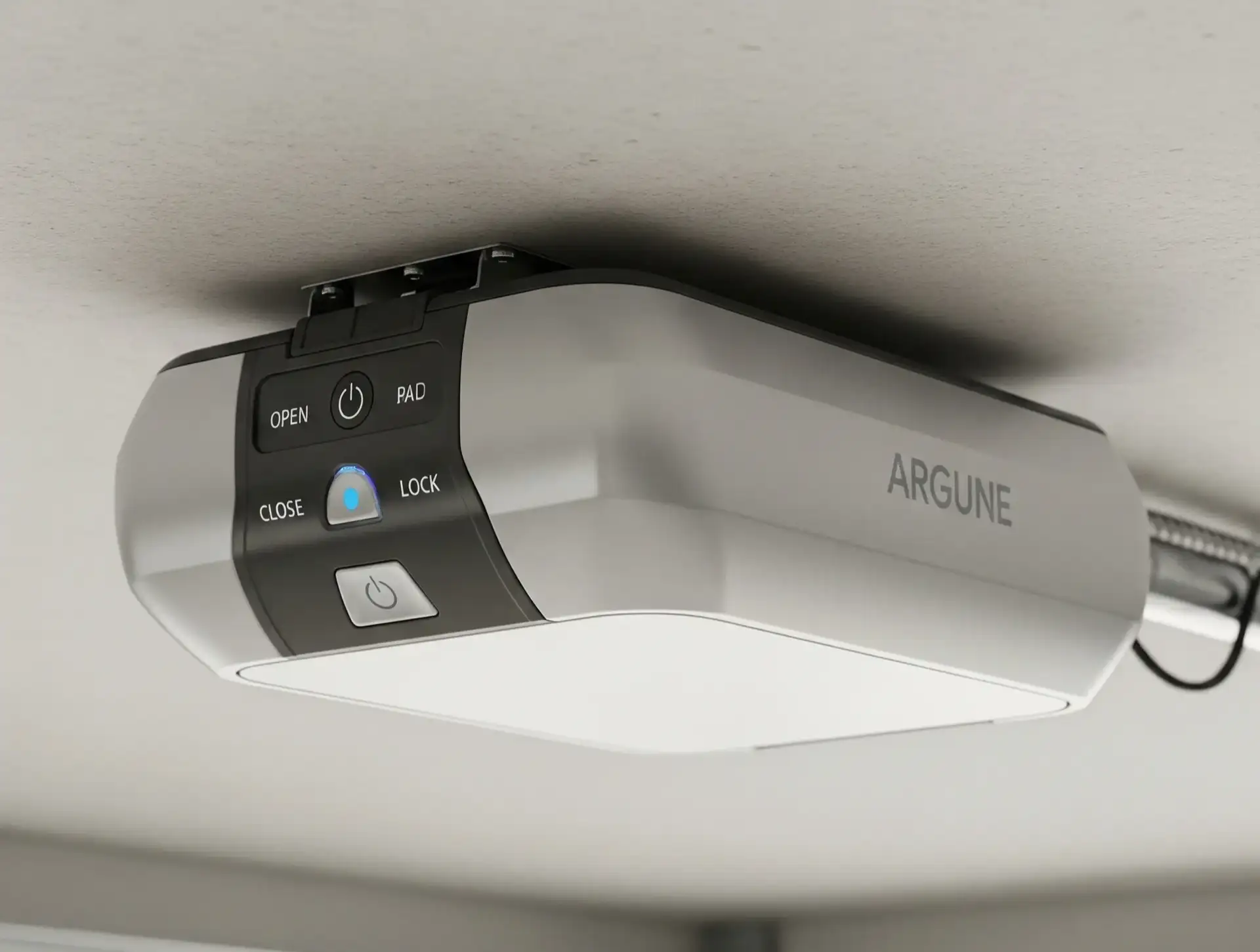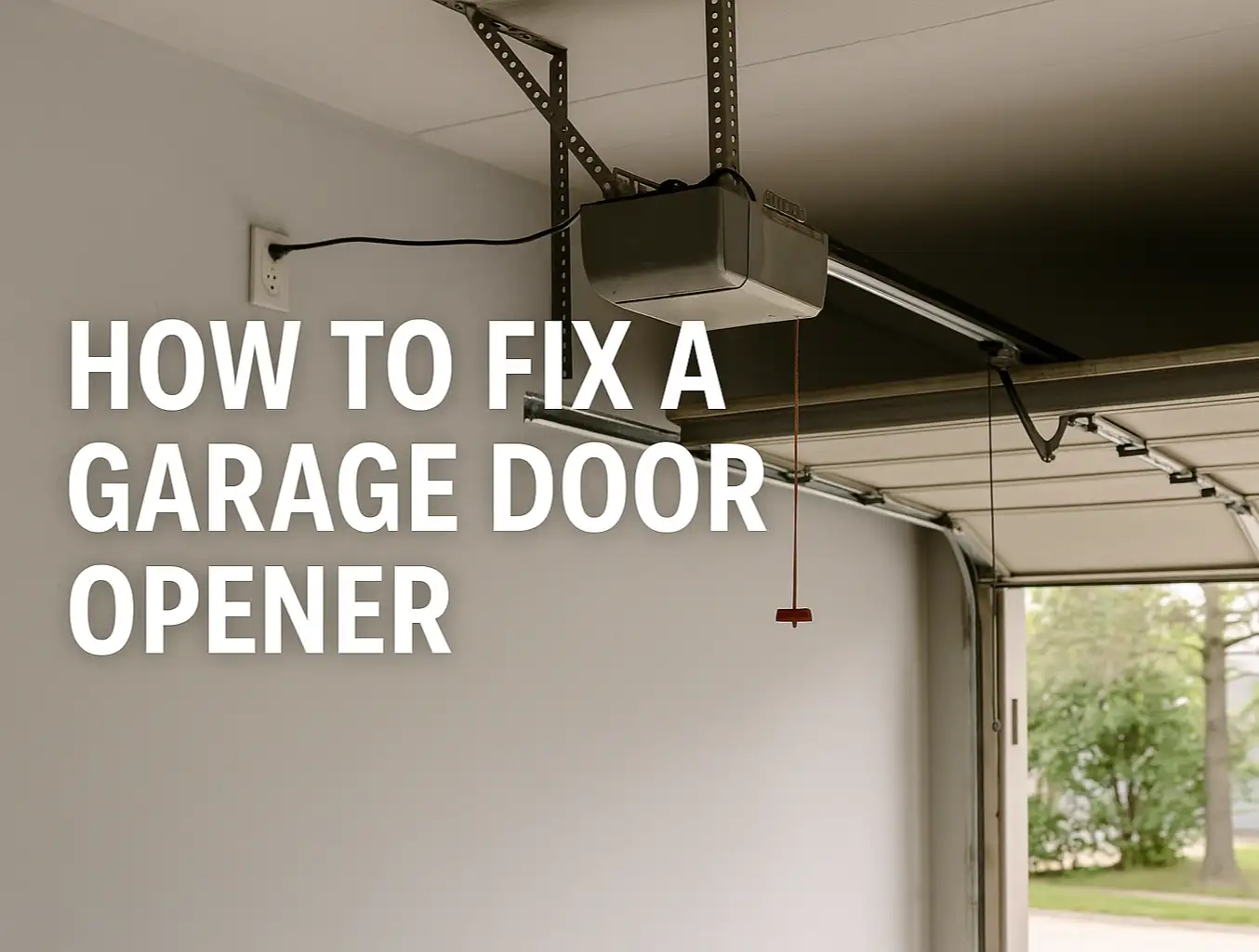How to Deactivate a Garage Door Opener for Security or Maintenance
Published: Aug 8, 2025
Whether you’re heading out of town, updating your garage system, or dealing with a malfunctioning remote, sometimes it’s best to temporarily deactivate a garage door opener. While many people associate garage opener issues with lost remotes or broken springs, deactivation is a smart move when you want to block access without deleting codes or replacing equipment.
In this guide, Up & Down Garage Doors explains how to disable a garage door opener in a few simple steps, without needing tools or complex programming. We’ll also help you understand when it’s appropriate to shut it down and what your options are.
Before You Deactivate a Garage Door Opener: When It Makes Sense

There are plenty of situations where shutting down your opener makes practical sense. For example, if you’re doing electrical work in the garage, planning to repaint around the motor unit, or just want to stop all remote access temporarily, deactivation is a safe and effective option.
Other common reasons include:
- Preparing your home for sale
- Avoiding accidental openings while you’re away
- Managing rental or shared garage access
- Suspecting someone has unauthorized access
In these cases, knowing how to deactivate a garage door opener gives you more control. It also helps prevent confusion or accidental triggers, especially if you have kids or multiple users. If you’re looking to take a remote offline but not erase it, you might also wonder how to deactivate a garage door remote — we’ll cover that too.

How to Disable a Garage Door Opener Safely
Once you’ve decided to deactivate a garage door opener or remote, there are a few practical ways to do it, depending on your system and what you’re trying to achieve. Each method below temporarily blocks access without deleting your saved settings.

- Unplug the opener unit. Simply disconnecting the power cord from the ceiling outlet will stop all remote and wall control signals. Plug it back in when you’re ready to restore access.
- Use the wall console lock feature. Many openers include a “lock” button on the wall panel. Activating it disables all remote signals while allowing the wall control to operate the door.
- Deactivate a garage door remote. Some opener models allow you to temporarily disable individual remotes without erasing them from memory. This is useful for shared or guest remotes that you want to block temporarily. Check your opener’s manual for instructions specific to your brand.

Each of these options will deactivate a garage door opener or remote without affecting your stored codes. That means you won’t need to reprogram the system afterward.
If you’re looking to completely remove remotes or wipe the system memory, check out our guide on how to erase garage door opener settings.
Need Help with Your Garage Door System?
Whether you’re dealing with a system that won’t shut off properly or you’re unsure which deactivation method fits your model, Up & Down Garage Doors is here to assist. We work with all major opener brands and provide honest, reliable help for both temporary fixes and long-term upgrades.
To learn more or book a service, explore our garage door opener page or get in touch with our team for straightforward advice based on your system.
You may also like


